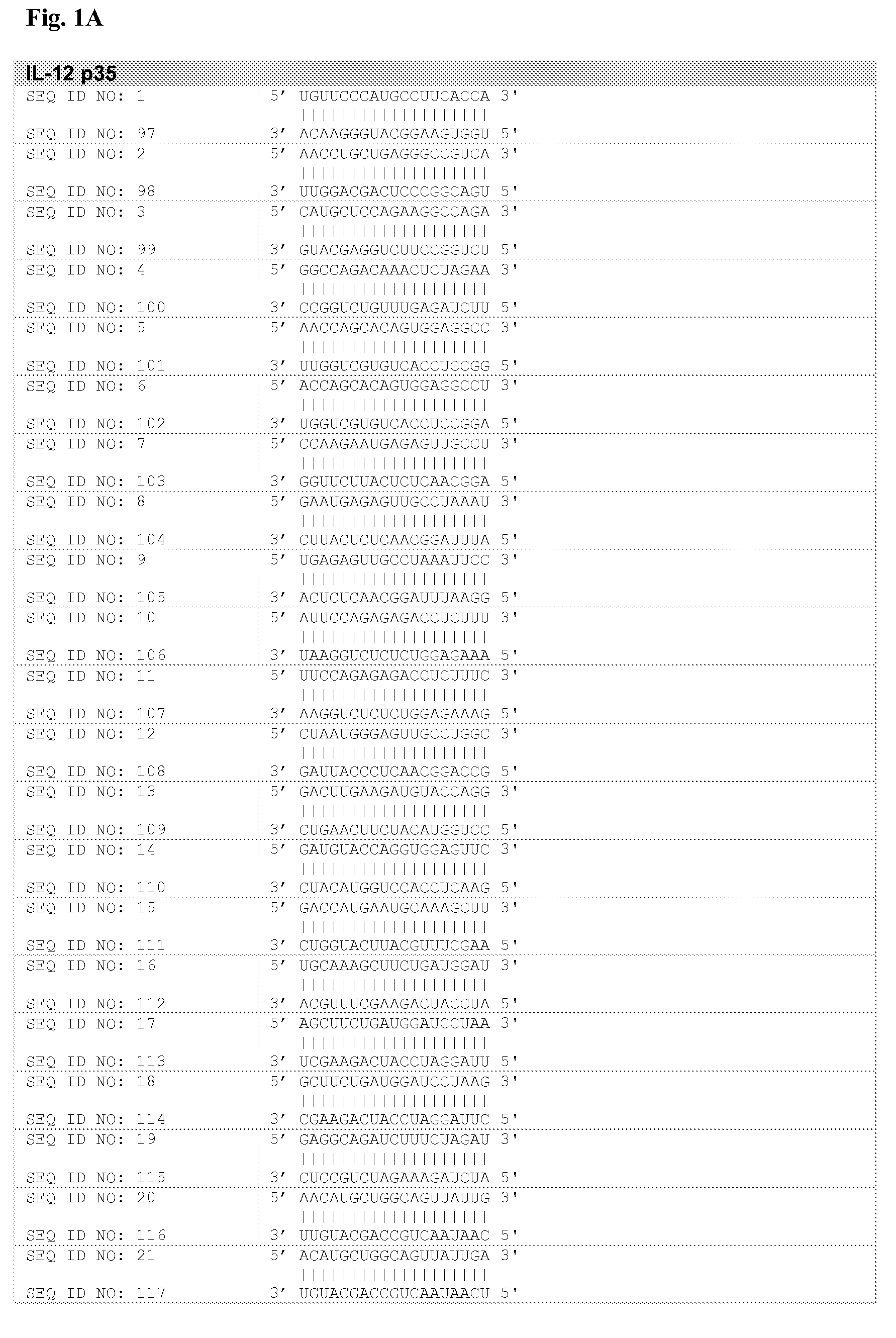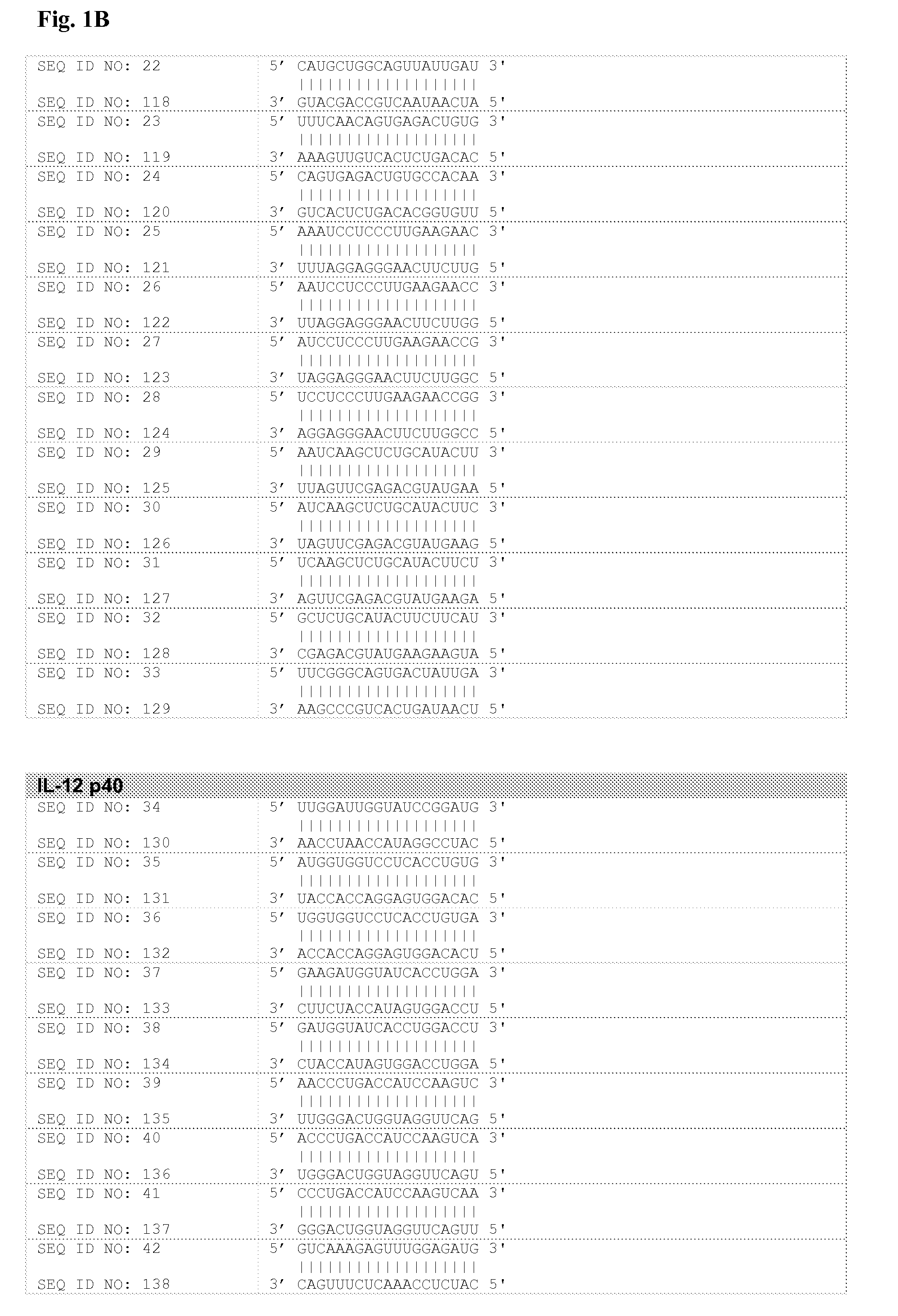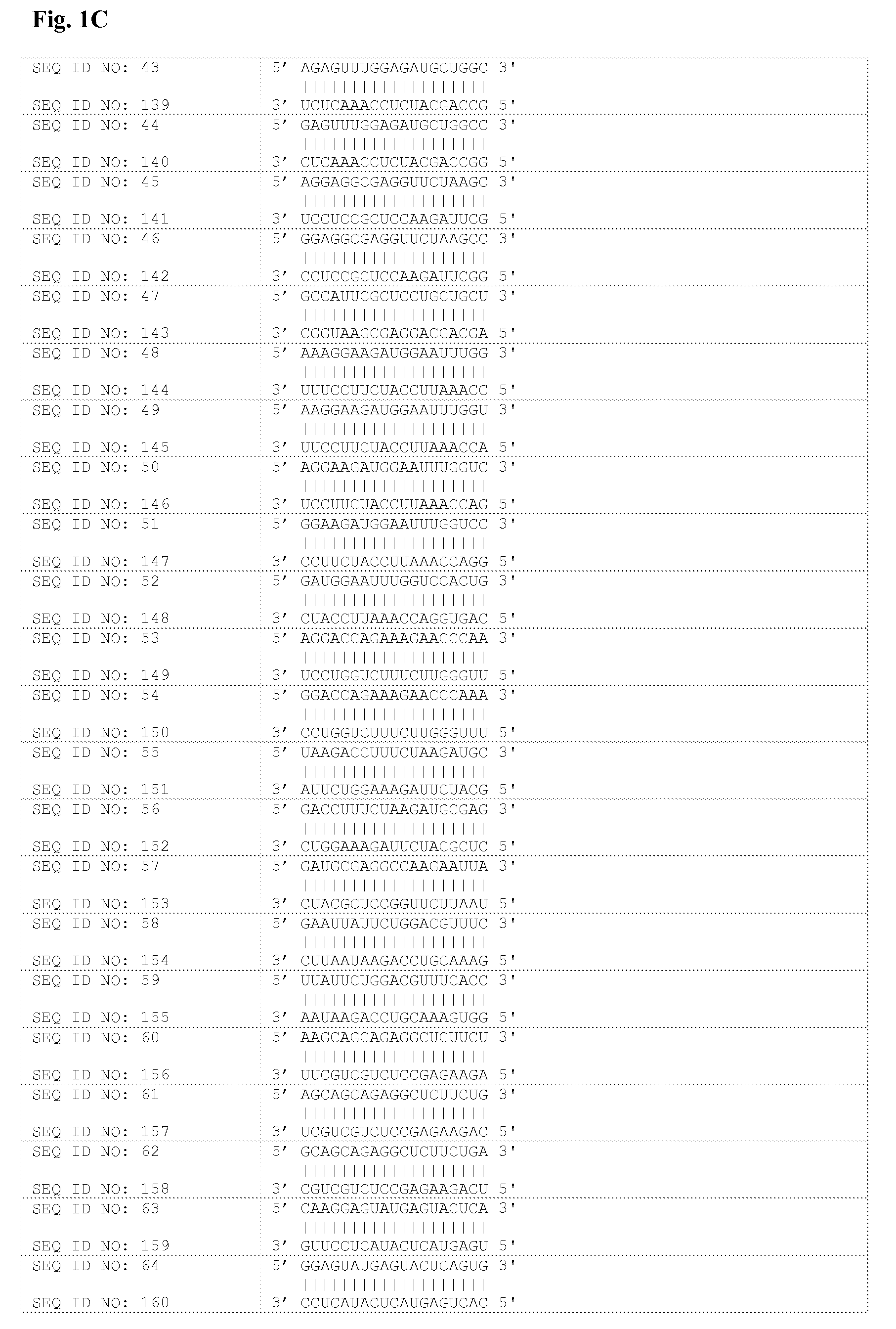Methods and compositions for the treatment of intestinal conditions
a technology for intestinal pathologies and compositions, applied in the direction of sugar derivatives, biocides, plant growth regulators, etc., can solve the problems of inconvenient treatment of inability to administer sirnas to the desired site of action, and inability to achieve the effect of treating intestinal conditions affecting the whole intestine or a significant portion,
- Summary
- Abstract
- Description
- Claims
- Application Information
AI Technical Summary
Benefits of technology
Problems solved by technology
Method used
Image
Examples
example 1
Design of siNA
[0102]GenBank Accession numbers corresponding to IL-12 p35 (Interleukin 12A, natural killer cell stimulatory factor 1, cytotoxic lymphocyte maturation factor 1, p35) and p40 (Interleukin 12B, natural killer cell stimulatory factor 2, cytotoxic lymphocyte maturation factor 2, p40) subunits are NM—000882 and NM—002187, respectively.
[0103]Corresponding mRNA nucleotide sequences were introduced within the proprietary prediction program described above, and siNA molecules directed to target IL-12 p35 and p40 subunits were obtained. The output of this analysis was a score of possible siNA oligonucleotides, the highest scores being used to design double stranded RNA oligonucleotides (typically 19 bp long) that were typically made by chemical synthesis.
[0104]In preferred embodiments, siNA compositions of the invention are any of SEQ ID NOS: 1-85 of FIG. 1; typically administered as a duplex of the sense strand and the antisense strand. The invention also encompasses siNA that ...
example 2
In vitro Assays
[0105]To check the specificity of the siRNA interference, cell cultures expressing the target genes were employed.
[0106]In the case of IL-12 p35 and p40 subunits, the cells used for the experiments were human colon adenocarcinoma SW480 cells and murine muscle cells C2C12. After incubation of the cells with the corresponding siRNA duplexes, the levels of p35 and p40 expression were analyzed. For linking siRNA knockdown to specific phenotypes in cultured cells, it is necessary to demonstrate the decrease of the targeted protein or at least to demonstrate the reduction of the targeted mRNA.
[0107]mRNA levels of the target gene can be quantitated by real time PCR (RT-PCR). Further, the protein levels can be determined in a variety of ways well known in the art, such as Western blot analysis with specific antibodies to the different target allow direct monitoring of the reduction of targeted protein.
[0108]siRNA are introduced into cells by means of any transfection techniqu...
example 2.1
In vitro Assays for IL-12 p35
[0114]To determine the inhibition of the IL-12 p35 target gene, a panel of siRNA contained within FIG. 1 were analyzed in cell cultures. siRNA with the best characteristics were selected to be tested and were applied to proper cell cultures, such as SW480. The effect of siRNA over the target gene was analyzed by RT-PCR according to the manufacturer's protocol. The gene target transcript levels were normalized using 18S as a housekeeping gene. Some of the different siRNA that were tested and their different efficacies in the interference of the target gene are included in the FIG. 2. These results correspond to transfection of 21-mer siNAs containing SEQ ID NO: 8 or SEQ ID NO: 17 in SW480 cells which naturally express IL-12p35. The values represent the mean of the percentage of the normalized mRNA levels upon siRNA interference over the control gene expression and their medium standard deviations (SEM). The level of p35 transcript after siRNA treatment wa...
PUM
| Property | Measurement | Unit |
|---|---|---|
| volume | aaaaa | aaaaa |
| pH | aaaaa | aaaaa |
| pH | aaaaa | aaaaa |
Abstract
Description
Claims
Application Information
 Login to View More
Login to View More - R&D
- Intellectual Property
- Life Sciences
- Materials
- Tech Scout
- Unparalleled Data Quality
- Higher Quality Content
- 60% Fewer Hallucinations
Browse by: Latest US Patents, China's latest patents, Technical Efficacy Thesaurus, Application Domain, Technology Topic, Popular Technical Reports.
© 2025 PatSnap. All rights reserved.Legal|Privacy policy|Modern Slavery Act Transparency Statement|Sitemap|About US| Contact US: help@patsnap.com



